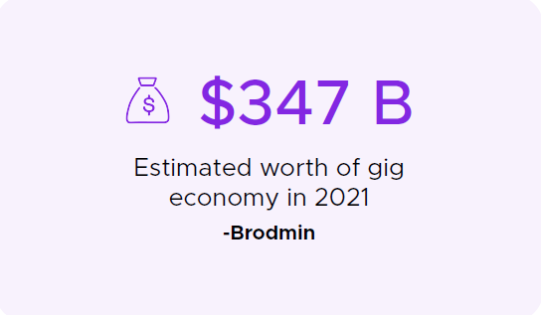Faced with what feels like a never-ending global skills shortage, service organizations are turning to technology to counter an ever-shrinking pool of talent. With fewer qualified candidates to hire, doing more with less has become a service imperative.
The short- and long-term effects of the global skills shortage
As explored in our recent IFS whitepaper: How Service Organizations Will Overcome the Global Skills Shortage, many factors have led us to our current reality, all of them beyond our control, including a global pandemic, an aging workforce, and a burgeoning gig economy.
As challenging as our current reality may be, there are still aspects of our business that remain firmly in our control. By leveraging existing infrastructure and new technologies, we can make tangible gains in workforce productivity, offsetting the impacts of a smaller talent pool while continuing to serve our customers and grow the business.
Technology holds the key
Our investment in technology is one of our most significant operational expenses. According to the experts at Gartner, global IT spending in 2021 alone is estimated to reach $3.9 trillion.
Service organizations rely on technology to support a range of activities, from scheduling service calls to streamlining backend systems. Unfortunately, we don’t always do a good job utilizing what we have. For example, while we rely on data from our systems to help inform our business decisions, 68% of the data available to us goes unleveraged.
As with any technology-based company, we must continually optimize and evolve the infrastructure we already have, augmenting our operation with innovative advances such as cloud migration, automation, and the real-time integration of systems and data.
Here are three examples of how service organizations can harness technology to help offset the challenges of a dwindling talent pool:
1. Intelligent scheduling

Some workforce efficiencies occur before a call is even dispatched. With advances in artificial intelligence (AI) and machine learning (ML), the best technician is automatically assigned to a work order based on the nature of the call, experience and skillset, geographical location, and even the equipment and parts available on the truck. As a result, first-time fix rates go up while truck rolls go down – leaving more time in the day for additional customer interactions.
Along with the latest technological advances, many service organizations use existing infrastructure to optimize where and how technicians spend their time.
For example, Associa, a community management organization with over 9,000 employees, leveraged its Field Service Management (FSM) platform to increase the mobility of its service technicians. The change was simple but impactful.
Instead of requiring technicians to clock in and receive work orders at the office each morning, Associa evolved to a mobile-first model—sending orders directly to each technician. This allowed workers to skip a daily visit to the office. The result? A whopping 2 hours of non-productive time eliminated daily for each technician.
2. Integrated systems & data
Completing a job on the first visit allows us to cover more service calls over time using a limited workforce. Yet often, many service technicians are unable to access the data they need, increasing the likelihood of a second visit.
Ainsworth, a multi-trade company that provides a range of services to different industries, knew it could do more with its data to help drive greater efficiencies in the field.
The organization focused on data accuracy and access, integrating its enterprise resource planning (ERP) system with its FSM solution to ensure precise and real-time data was available to workers in the field.
Working with Android devices, technicians can complete work orders, communicate with dispatchers, and respond to any other issue that may arise during a call.
Along with an increase in first-time fixes, these advances contribute to higher customer satisfaction levels since fewer service cycles are required to resolve an issue.
3. Interactive service delivered remotely

The more time a service technician spends traveling, the fewer calls they can attend. Augmented and merged reality (AR/MR) tools allow us to effectively eliminate drive time, converting these non-productive hours into face-to-face customer interactions.
Although this technology has been in use for some years, the global pandemic accelerated its adoption, providing service organizations a means to safely interact with customers without making physical contact.
Many home visits are eliminated by remotely guiding customers through simple troubleshooting steps. And with a substantial reduction in travel time, more service calls are resolved by each technician.
Panasonic has implemented a remote service model using collaborative merged reality software in its UK and German National Service Centers. Along with increased efficiencies during customer interactions, the organization has streamlined its processes for a consistent service model across regions.
Conclusion
The global skills shortage isn’t going away. Putting aside those factors we can’t control we must leverage the tools and technology available to us to do more with the same (and often less).
For a deeper examination of the global skills shortage, including constructive advice on how you can hire and hold onto your top performers, read the industry paper on skills shortages.
Do you have questions or comments?
We’d love to hear them so please leave us a message below.
